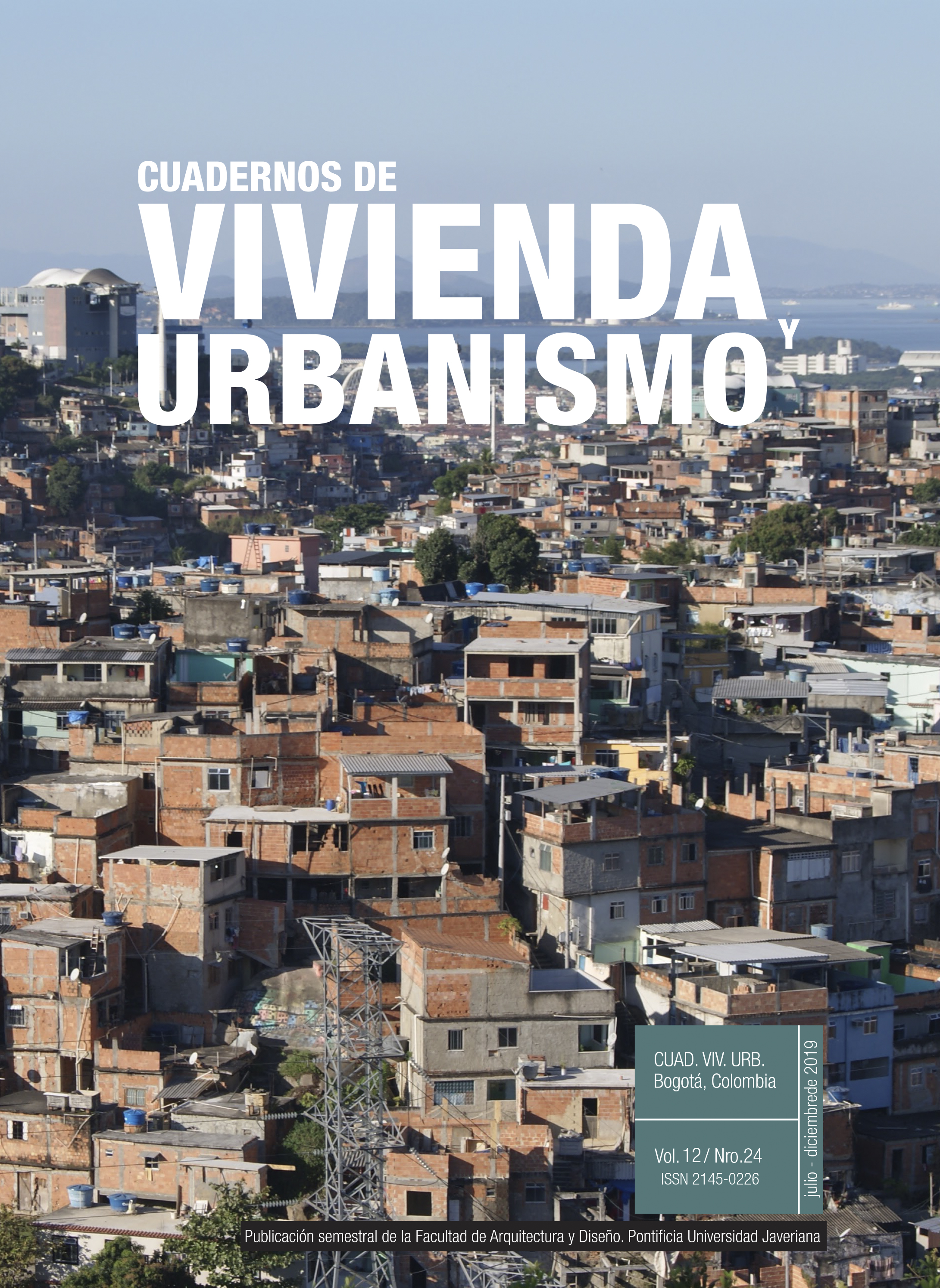Abstract
In Bogotá the street sales have been historically seen as a public problem, which is materialized in the urban space and over the last years has become a strongly politicized issue. The debate has been mostly focused on the contradiction between the defense of the right to enjoy the public space and the protection of the right to work for thousands of citizens who make a livelihood from the street sales. In this context, the left-wing local administrations are proposing to develop a policy intended to create ´analogous spaces´ as a potential solution to this contradiction. This article outlines the context in which they came up with such proposal. It also describes the development of a set of hypothetical provisions calling for reflection on the spatial implications of hypothetically implementing such a policy and on the potentialities of a diagram analysis methodology.
Alcaldía Mayor de Bogotá. (2005). Plan Maestro de espacio público. Bogotá: Alcaldía Mayor de Bogotá.
Alcaldía Mayor de Bogotá. (2015, 15 de marzo). Radiografía del espacio público en Bogotá. Recuperado de https://www.bogota.gov.co
Alfonso, W. H. (2010). Politización de las ventas ambulantes en Bogotá. Revista de Arquitectura, 12(1), 4-16.
Aliaga-Linares, L. (2018). The paradoxes of Informalizing Street Trade in the Latin American City. International Journal of Sociology and Social Policy, 38(7-8), 651-672.
Alexander, C. (1969). Ensayo sobre la síntesis de la forma. Buenos Aires: Editorial Infinito.
Berney, R. (2011). Pedagogical urbanism: Creating citizen space in Bogotá, Colombia. Planning Theory, 10(1), 16-34.
Blomley, N. (2010). Rights of passage: Sidewalks and the regulation of public flow. Londres: Routledge.
Castañeda, A., y García, J. (2007). Hábitat y espacio público: el caso de los vendedores informales en el espacio público físico de Bogotá. Bogotá: Alcaldía Mayor de Bogotá.
Castro-Cabrera, M. (2003). Gestión del desplazamiento por construcción de obra pública en Bogotá. Trabajos de grado CIDER Vol. 6. Bogotá: Universidad de Los Andes.
Delgado, M. (2005). Elogio del afuera: lo urbano como sociedad sin asiento. Arquitectos, 116(5-4), 55-76.
Donovan, M. G. (2008). Informal cities and the contestation of public space: The case of Bogotá’s street vendors, 1988-2003. Urban Studies, 45(1), 29-51.
Galvis, J. P. (2014). Remaking Equality: Community Governance and the Politics of Exclusion in Bogota’s Public Spaces. International Journal of Urban and Regional Research, 38(4), 1458-1475.
“Historia ambulante”. (2002, 15 de diciembre). El tiempo. Recuperado de https://www.eltiempo.com/archivo/documento/MAM-1352701
Hunt, S. (2009). Citizenship’s place: the state’s creation of public space and street vendors’ culture of informality in Bogota, Colombia. Environment and planning D: Society and Space, 27(2), 331-351.
Instituto para la Economía Social (IPES). (2016). Caracterización vendedores ambulantes en Bogotá. Recuperado de https://www.ipes.gov.co/images/informes/Estudios_e_investigaciones/CARACTERIZACION_VENDEDORES_INFORMALES_EN_BOGOTA2016.pdf
Lofland, L. H. (1998). The public realm: Exploring the city’s quintessential social territory. Nueva York: Routledge.
Molina, H., Wanderlay, F., Roig, A., y Correa, H. (2013, abril). El espacio público y la economía popular. Conferencia presentada en el Seminario internacional y diálogos locales. Economía popular ¿Qué es y para donde va en Bogotá? Bogotá.
Mvrdv. (1999). Metacity Datatown. Rotterdam: 010 Publishers.
Pulecio, J. (2013, abril). La economía popular en el plan de desarrollo Bogotá Humana. Ponencia presentada en Seminario Internacional y Diálogos Locales. Economía popular ¿Qué es y para donde va en Bogotá? Bogotá.
Rocha, R., Sánchez, F., y García, L. (2009). Ventas callejeras y espacio público: efectos sobre el comercio de Bogotá. Revista Desarrollo y Sociedad, (63), 245-268.
Tixier, N, Assefa, I., Cifuentes , C., Fiori, S., Mcoisans, J., y Rouchy, C. (2011). The recuperation of public space: A closer look at Bogotá, Colombia. En N. Kaufman (ed.), Pressures and Distortions. City Dwellers as Builders and Critics: Four Views (pp. 339-433). Nueva York, Estados Unidos: The Research Program of Rafael Vinoly Architects.
“Vendedores ambulantes por doquier”. (2014, 31 de mayo). Semana. Recuperado de https://www.semana.com/nacion/articulo/en-bogota-vendedores-ambulantes-por-doquier/390120-3
This journal is registered under a Creative Commons Attribution 4.0 International Public License. Thus, this work may be reproduced, distributed, and publicly shared in digital format, as long as the names of the authors and Pontificia Universidad Javeriana are acknowledged. Others are allowed to quote, adapt, transform, auto-archive, republish, and create based on this material, for any purpose (even commercial ones), provided the authorship is duly acknowledged, a link to the original work is provided, and it is specified if changes have been made. Pontificia Universidad Javeriana does not hold the rights of published works and the authors are solely responsible for the contents of their works; they keep the moral, intellectual, privacy, and publicity rights.
Approving the intervention of the work (review, copy-editing, translation, layout) and the following outreach, are granted through an use license and not through an assignment of rights. This means the journal and Pontificia Universidad Javeriana cannot be held responsible for any ethical malpractice by the authors. As a consequence of the protection granted by the use license, the journal is not required to publish recantations or modify information already published, unless the errata stems from the editorial management process. Publishing contents in this journal does not generate royalties for contributors.



